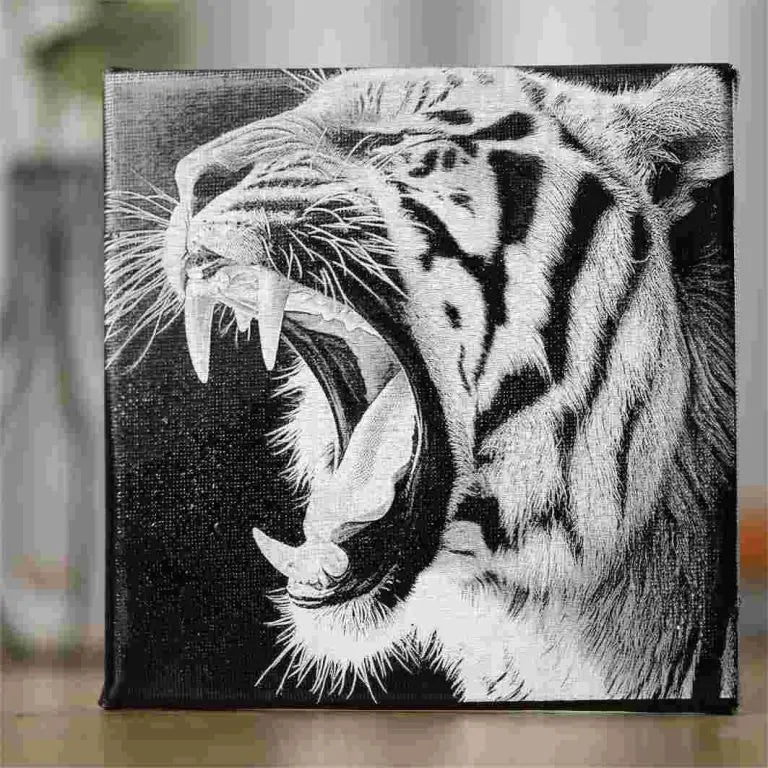What to Engrave and Avoid with a Diode Laser Engraver: Complete Guide
Posted by Joey Weng on
Introduction
Diode laser engravers are becoming a go-to choice for hobbyists, small businesses, and DIY enthusiasts due to their affordability, precision, and compact design. Operating with a blue-light laser (typically 450nm wavelength) and power ranging from 5W to 20W, NEJE diode laser engravers, like the NEJE Max 4, are perfect for crafting personalized gifts, custom decor, or small-scale commercial products.
However, not all materials are suitable for diode laser engraving. Some materials yield stunning results, while others pose risks to your health, equipment, or project quality. In this comprehensive guide, we’ll explore the best materials for diode laser engraving and highlight materials to avoid, based on NEJE’s extensive testing.
Materials suitable for diode laser engraving
Diode lasers shine when working with non-metal materials, offering clean engravings and precise cuts. Here are the best materials to use with your NEJE engraver, complete with types, applications, and tips for success.
1. Wood: The Versatile Classic
Types: Alder, cherry, maple, birch, plywood, MDF.
Applications: Custom signs, coasters, picture frames, decorative items.

2. Acrylic: Vibrant and Polished
Types: Clear, colored, frosted (avoid mirrored).
Applications: Signage, awards, keychains, lamp.

3. Leather: Luxurious Personalization
Types: Genuine leather, faux leather, suede (chromium-free).
Applications: Wallets, belts, handbags, book covers.

4.Paper & Cardboard: Precision Crafting
Types: Cardstock, corrugated cardboard, paperboard.
Applications: Greeting cards, packaging, bookmarks, business cards.

5. Fabric: Textile Artistry
Fabrics allow for creative patterns and cutouts.
Types: Denim, polyester, felt.
Applications: Clothing, bags, patches, home decor.

6. Stone: Durable and Timeless
Types: Marble, granite,Cobblestone, slate.
Applications: Memorial plaques, garden stones, coasters, trophies.

7. Coated Steels: Entry-Level Metal Marking
Types: Anodized aluminum, coated stainless steel.
Applications: Plaques, jewelry, business cards, industrial parts.

8. Other Creative Materials: Bamboo, Cork, Canvas and More
Applications: Home decor, crafts, gifts.

Materials to Avoid with Diode Laser Engravers
Some materials are unsafe or unsuitable for diode laser engraving due to toxic fumes, equipment damage, or poor results. Here’s what to steer clear of, with reasons and safer alternatives.
-
PVC (Polyvinyl Chloride)
-
Why Avoid: Releases corrosive chlorine gas.
-
Avoid: Vinyl, PVC-containing materials.
-
Alternative: Acrylic.
-
-
ABS Plastic
-
Why Avoid: Melts into sticky residue, emits toxic fumes.
-
Avoid: ABS-based toys, 3D prints.
-
Alternative: PETG, Delrin.
-
-
Polystyrene
-
Why Avoid: Melts easily, highly flammable.
-
Avoid: Foam packaging.
-
Alternative: Cardboard.
-
-
Fiberglass
-
Why Avoid: Emits toxic glass dust, resin fumes.
-
Avoid: Fiberglass composites.
-
Alternative: Stone.
-
-
Coated Carbon Fiber
-
Why Avoid: Coatings release toxic fumes; uncoated may ignite.
-
Avoid: Industrial carbon fiber panels.
-
Alternative: Wood.
-
-
Polycarbonate
-
Why Avoid: Melts unevenly, produces irritating fumes.
-
Avoid: Safety glasses, bottle materials.
-
Alternative: Acrylic.
-
-
Chlorine-Containing Materials
-
Why Avoid: Release corrosive gases.
-
Avoid: Treated plastics, chlorine-treated fabrics.
-
Alternative: Verify material composition.
-
-
Uncoated Metals
-
Why Avoid: Reflect laser, risking injury or damage.
-
Avoid: Bare aluminum, brass, copper.
-
Alternative: Coated metals, fiber laser.
-
-
Phenolic Resins
-
Why Avoid: Produce acidic gases, damaging equipment.
-
Avoid: Circuit boards, composite resins.
-
Alternative: MDF.
-
Safety Tips
-
Ventilation: Use fume extractor or well-ventilated area.
-
Test First: Run small tests to adjust power/speed/dpi.
-
Maintenance: Clean lenses, rails regularly.
Share this post
- 0 comment
- Tags: Laser engraver, Laser Engraving, Laser Engraving Software, Laser engraving wood, Stone Engraving
